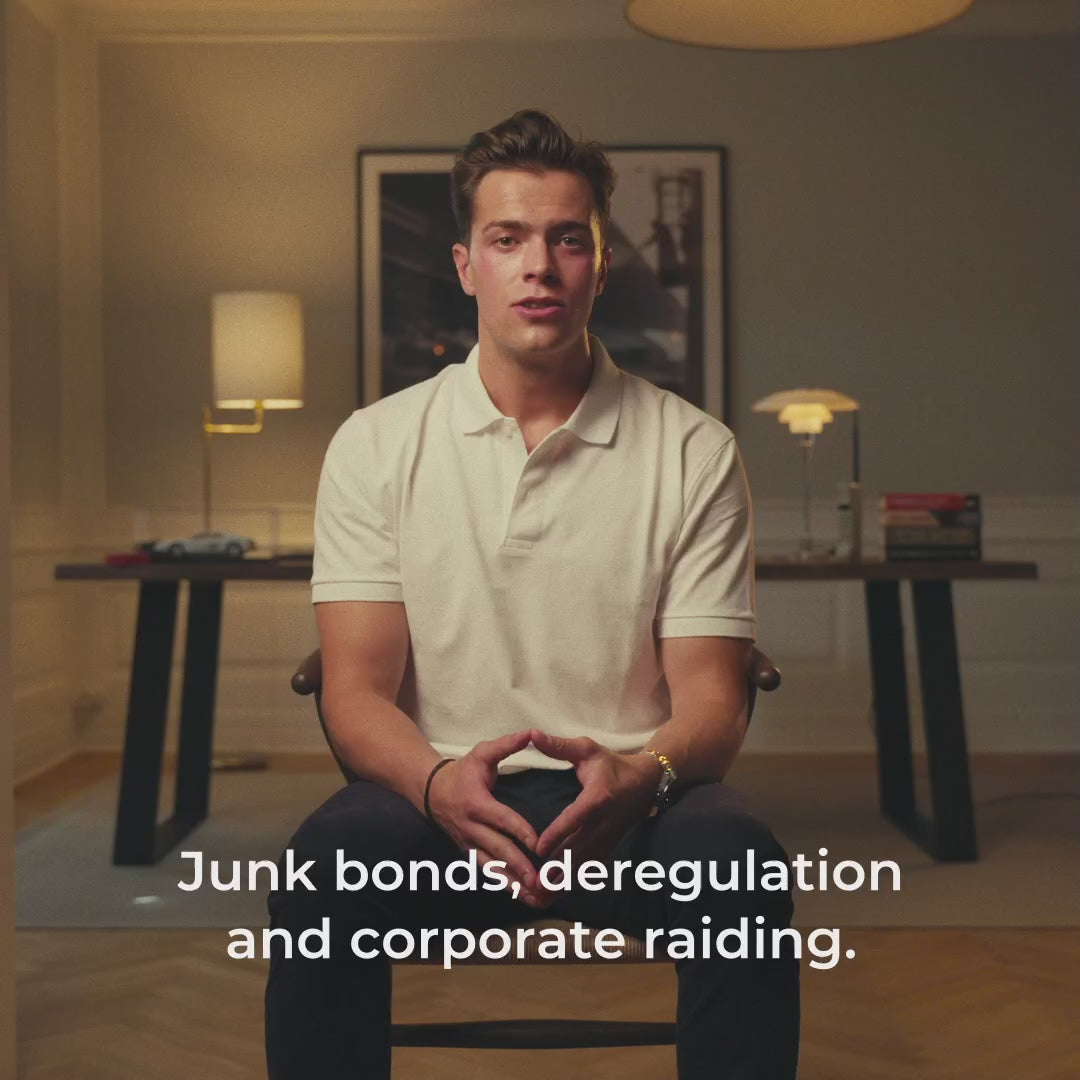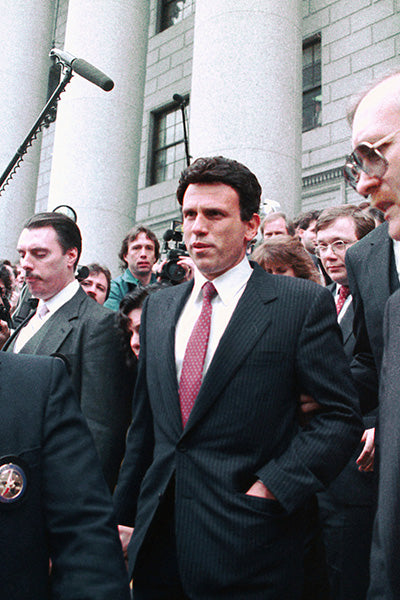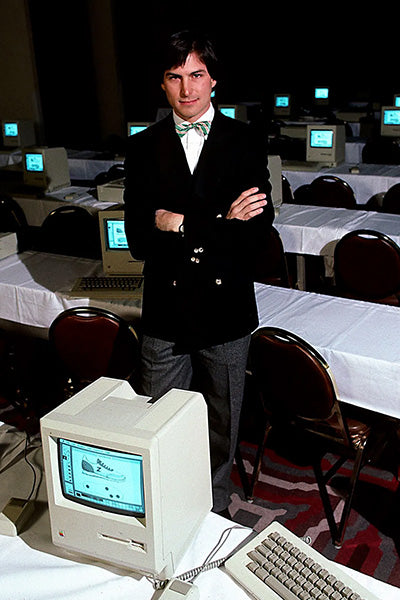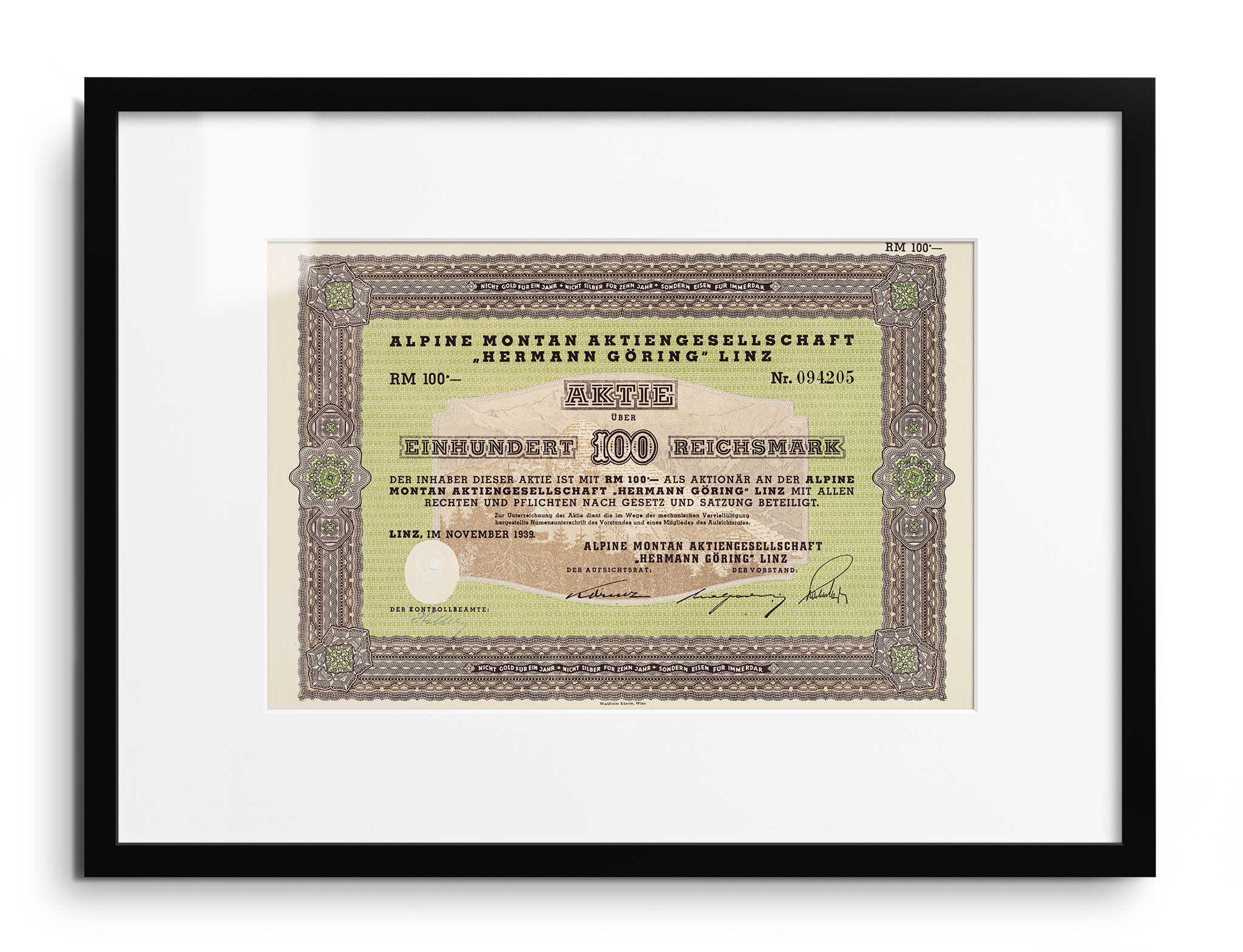
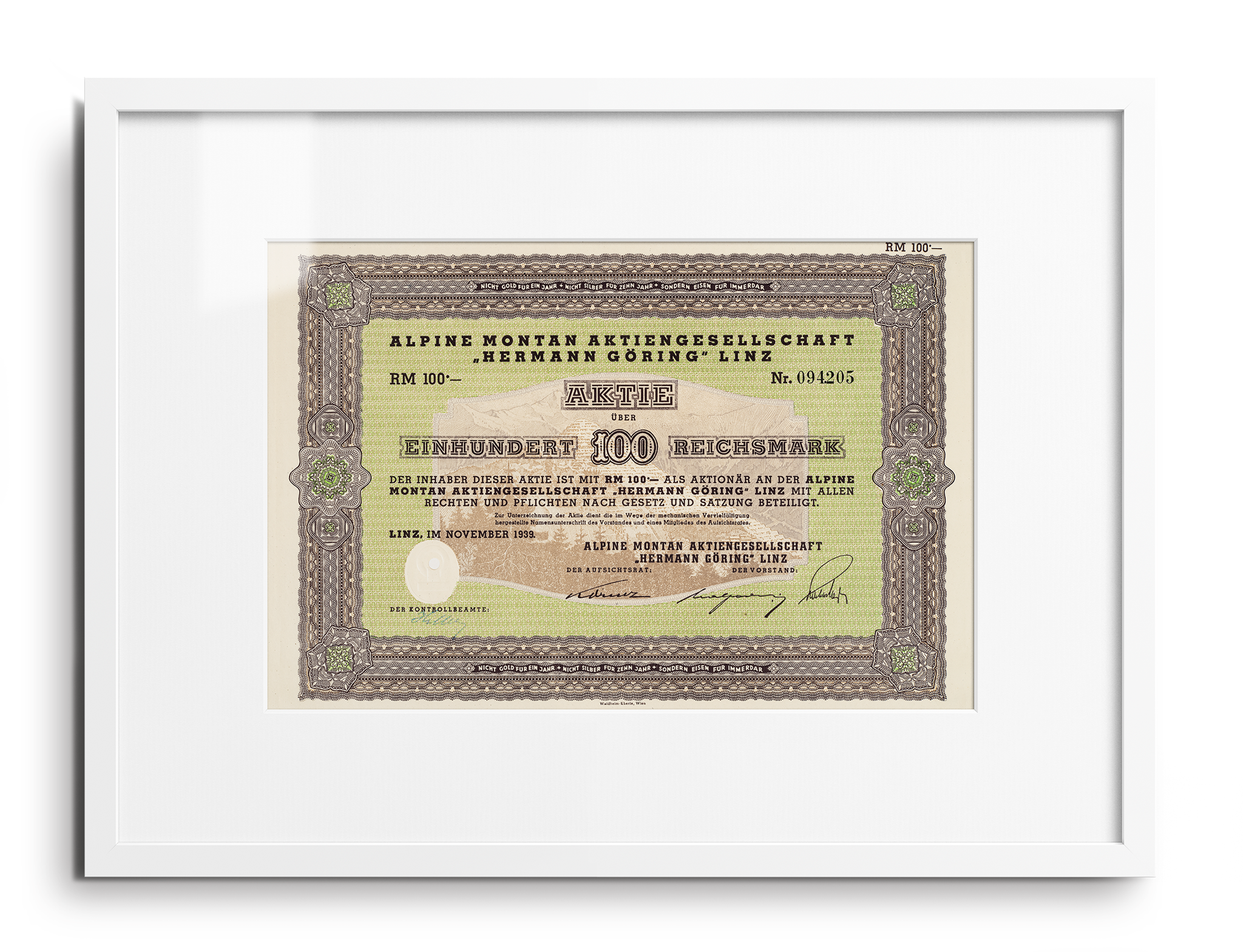
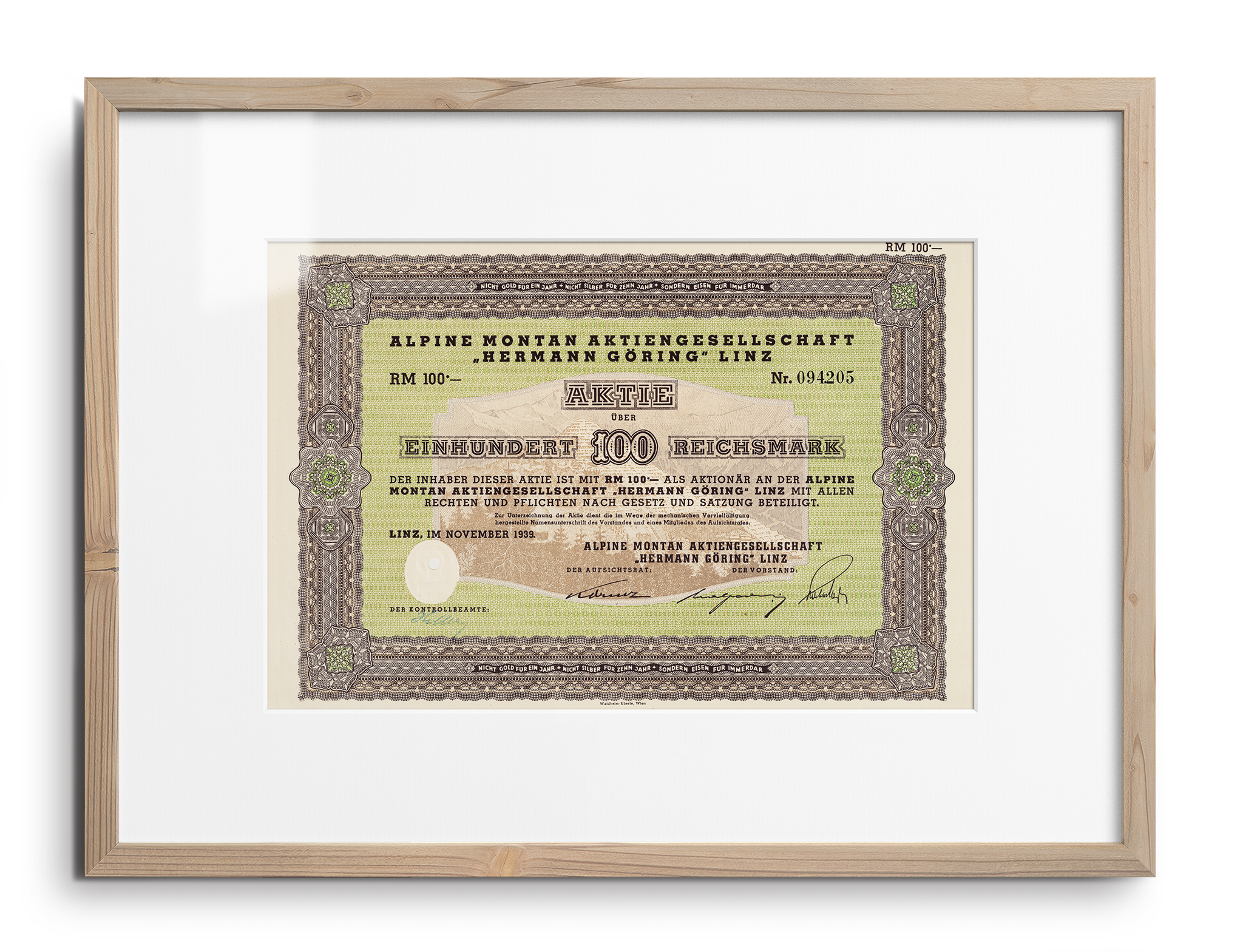
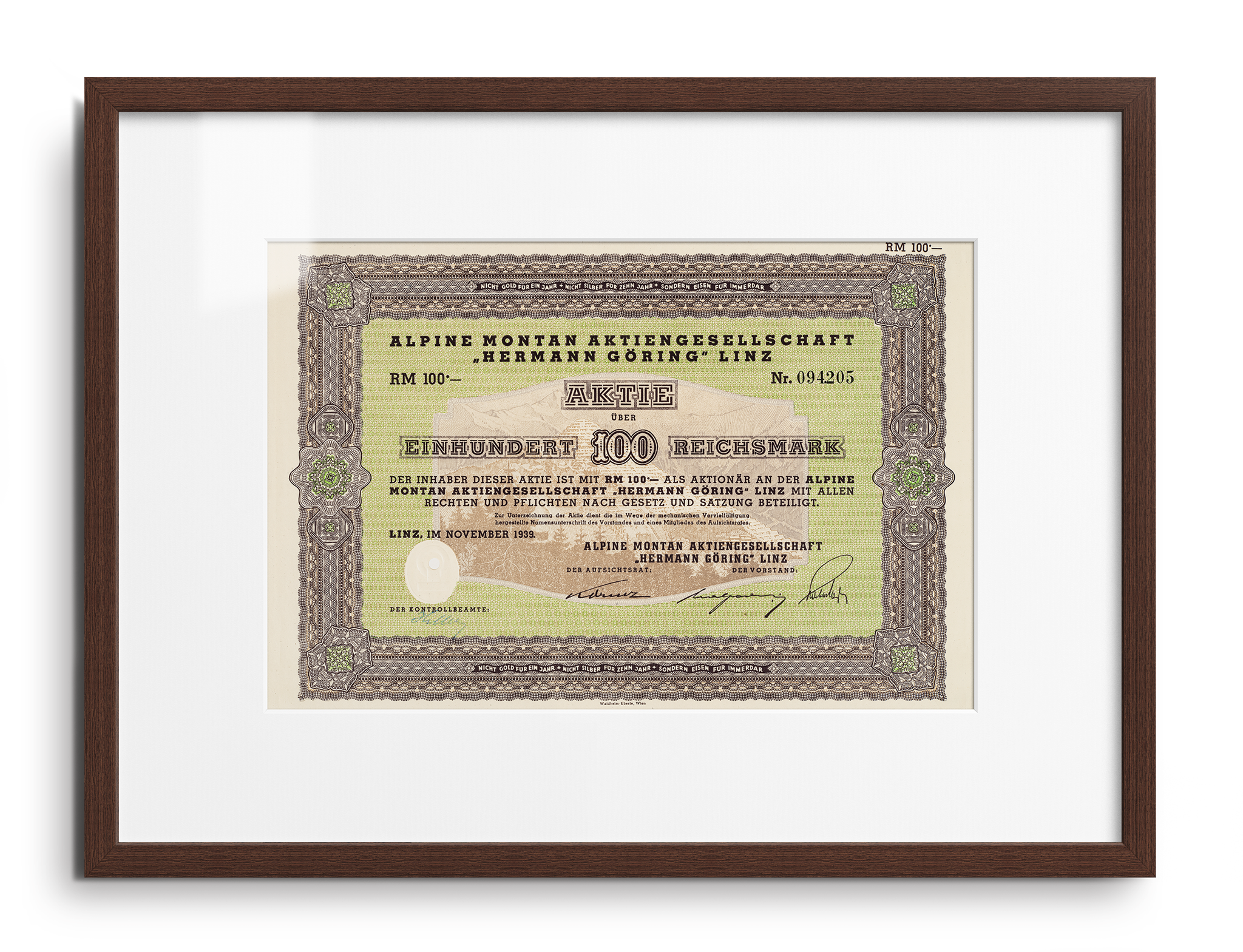
Göring (WW2) 1939
HANDMADE IN EUROPE
24-HOUR SUPPORT
FREE WORLDWIDE DELIVERY
GIFT-READY PACKAGING
30-DAY RETURNS
Printing & Framing
All pieces are kept in original dimensions and printed on a custom fine art paper specially developed to match the texture of the original certificate. Prints are mounted behind a premium "passe-partout" mat that adds to the visual appeal of the piece. This is a stunning method of framing and the preferred choice of most artists and galleries for this size of prints.
Our premium frames are available in black, white, natural oak, and natural wenge. Each frame is handcrafted from premium, FSC-certified hardwood and glazed with museum-grade protective acrylic glass to ensure longevity. All pieces arrive with pre-installed hanging hardware for easy installation. Frames feature an elegant 0.6" (15mm) profile and measure 18.5" x 13.8" (47cm x 35cm).
Shipping & Returns
Our pieces are made to order and assembled by hand, so please allow a few days for us to complete your order. You'll receive a shipping confirmation with tracking details from us as soon as your order has shipped.
All orders are shipped using premium couriers to ensure speedy and careful delivery. Please see approximate delivery times below. If you'd like a more precise estimate, please reach out and we'll be happy to help you.
Standard delivery: 3 to 5 business days
Express delivery: 1 to 2 business days
We offer a 30-day return policy on all standard orders. If you'd like to make a return, or if your piece arrives in anything other than perfect condition, please let us know, and we will repair or replace the piece! Unfortunately, we are unable to accept returns of personalized items.
ALPIN MONTAN AG
Alpine Montan AG was an industrial conglomerate in Nazi Germany. It was established in July 1937 to extract and process domestic iron ores from Salzgitter that were deemed uneconomical by the privately held steel mills. The state-owned conglomerate was seen as a vehicle of hastening growth in ore mining and steel output regardless of private capitalists' plans and opinions, which ran contrary to Adolf Hitler's strategic vision. In November 1937, Reichsminister of Aviation Hermann Göring obtained unchecked access to state financing and launched a chain of mergers, diversifying into military industries with the absorption of Rheinmetall. Göring himself supervised the conglomerate but did not own it in any sense and did not make personal profit from it directly, although at times he withdrew cash for personal expenses.
After the Anschluss, the company absorbed Austrian heavy industries, including those owned by private German investors. The cluster of steel mills and supporting companies in Linz became its most important asset. Nazi leadership regarded captured assets as the property of the state and were not willing to share the spoils with German businesses. After the German occupation of Czechoslovakia, the conglomerate absorbed between 50 and 60 per cent of Czech heavy industries. The pattern was repeated in occupied Poland, France and the Soviet Union. The conglomerate operated captured assets as far from its base as Liepāja in Latvia and Donetsk in eastern Ukraine. It provided one-eighth of German steel output during the Second World War and created a Nazi-controlled military complex that was independent of private interests. By the end of 1941 the conglomerate became the largest company in Europe and probably in the whole world, with a capital of 2.4 billion reichsmarks and about half a million workers.
In 1942 the conglomerates inefficient corporate structure was reduced in size. Its weapons and munitions assets were integrated into the Ministry of Armaments; the mining and steel core of the conglomerate continued operation under Göring's supervision until the end of the war, albeit at a loss. The conglomerate was dismembered by the Allies in 1944–1945, but the Salzgitter plant continued operations as Alpine Montan AG until 1953. The Reichswerke logo, which resembled Göring's coat of arms, remained in use by Peine+Salzgitter until the middle of the 1980s.
Choose Options




Trusted by Leading Organizations.
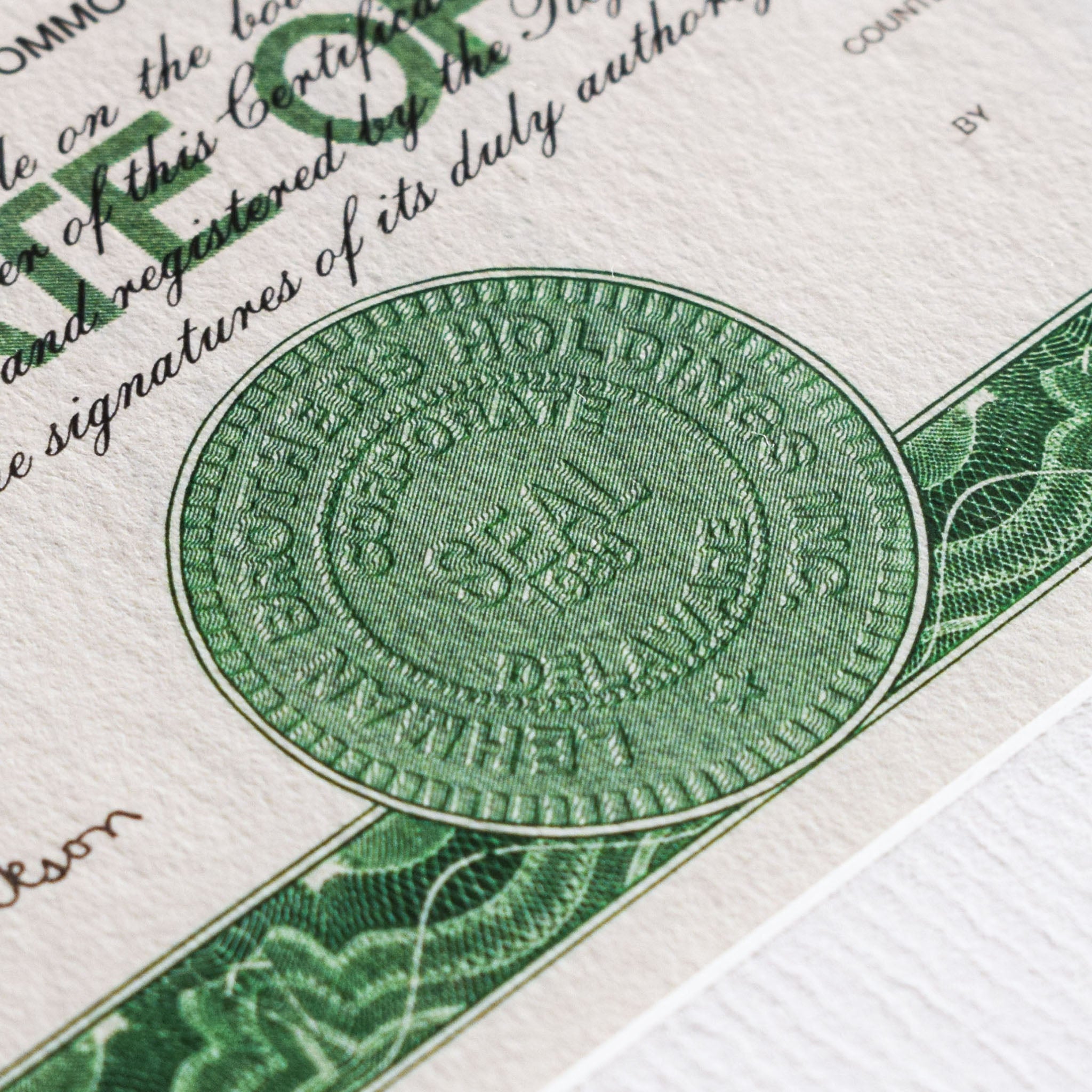
True to the Original.
Our reproduction experts utilize cutting-edge technology to make sure each print looks exactly like the original certificate. This includes a custom fine art paper specially developed to match the texture of the original certificates so you can enjoy the vintage charm of these rare pieces without the hefty price tag or the hassle of auction.
Built to Last a Lifetime.
We visited every corner of the print world in search of the highest quality materials and stopped at nothing to create the best framed product on the market. Reproduced by leading reproduction experts, printed on fine art paper using premium pigment inks, and framed by hand, the result is a museum-grade product guaranteed to last for more than 50 years.
Frequently Asked Questions
No, we sell museum-grade reproductions ("prints") so you can access these historic designs without the hefty price tag or the hassle of auction.
Yes, we offer a personalization service that allows you to add your name to our historic pieces. All customizations are printed in the exact style and position of the original, ensuring your personalized certificate retains its authentic vintage appearance. Check out our Personalizable Collection for customizable prints.
Yes, we offer progressive volume discounts on all orders of more than one item. Simply add the desired number of products to your cart to automatically activate the applicable discount or check out our popular Office Bundles.
For collaborations and orders of 10+ items, please get in touch through our Contact Page to learn about our Trade Program and access bulk pricing.
Yes, we don’t include invoices or any indication of price in our packaging. Each item is packed in branded materials with a quality certificate and logo stickers for a premium unboxing experience that makes our pieces very suitable as gifts.
